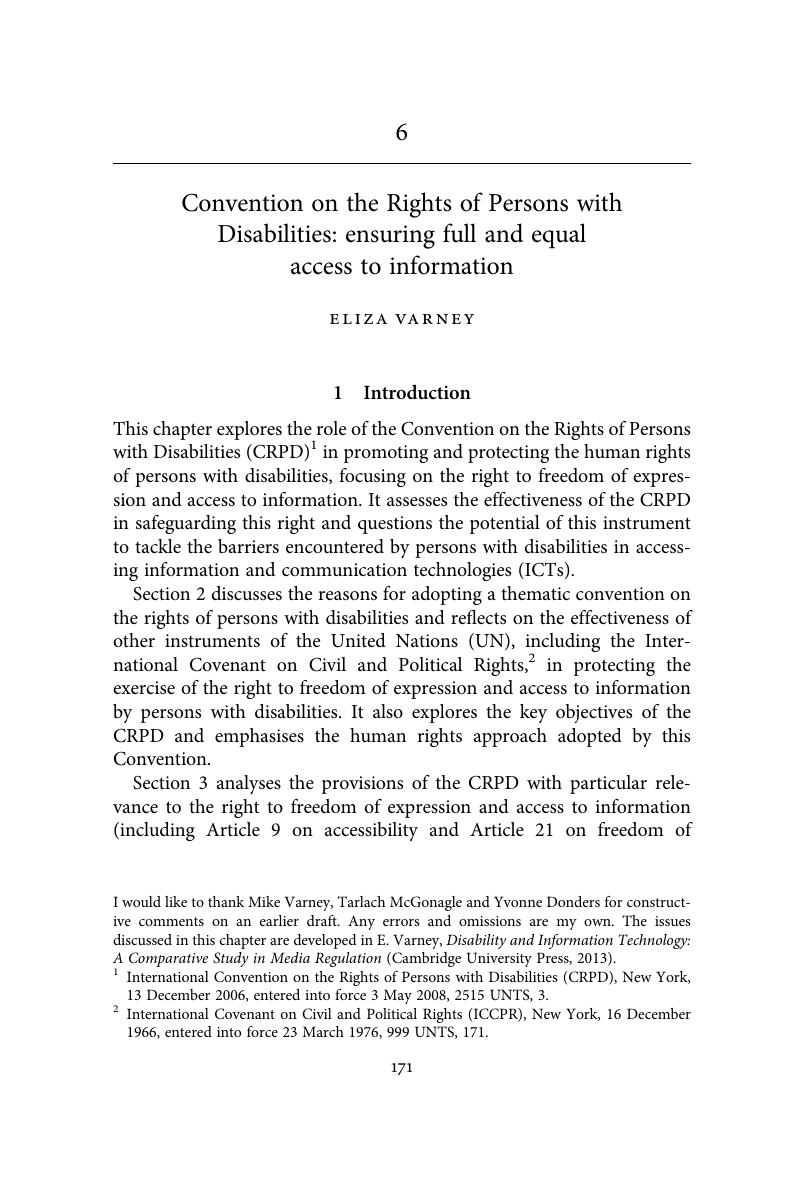Book contents
- The United Nations and Freedom of Expression and Information
- Frontispiece
- The United Nations and Freedom of Expression and Information
- Copyright page
- Contents
- Dedication and Appreciation
- Notes on Contributors
- Foreword
- Glossary
- Book part
- 1 The development of freedom of expression and information within the UN: leaps and bounds or fits and starts?
- Part I UN normative and institutional approaches to the protection of freedom of expression and information
- 2 International Covenant on Civil and Political Rights: interpreting freedom of expression and information standards for the present and the future
- 3 International Covenant on Economic, Social and Cultural Rights: accessibility and the right toinformation
- 4 International Convention on the Elimination of All Forms of Racial Discrimination: the prohibition of ‘racist hate speech’
- 5 Convention on the Rights of the Child: freedom of expression for children
- 6 Convention on the Rights of Persons with Disabilities: ensuring full and equal access to information
- 7 UNESCO: freedom of expression, information and the media
- 8 The UN Special Rapporteur on freedom of opinion and expression: progressive development of international standards relating to freedom of expression
- Part II Selected thematic focuses
- Book part
- Index
- References
6 - Convention on the Rights of Persons with Disabilities: ensuring full and equal access to information
from Part I - UN normative and institutional approaches to the protection of freedom of expression and information
Published online by Cambridge University Press: 05 June 2015
- The United Nations and Freedom of Expression and Information
- Frontispiece
- The United Nations and Freedom of Expression and Information
- Copyright page
- Contents
- Dedication and Appreciation
- Notes on Contributors
- Foreword
- Glossary
- Book part
- 1 The development of freedom of expression and information within the UN: leaps and bounds or fits and starts?
- Part I UN normative and institutional approaches to the protection of freedom of expression and information
- 2 International Covenant on Civil and Political Rights: interpreting freedom of expression and information standards for the present and the future
- 3 International Covenant on Economic, Social and Cultural Rights: accessibility and the right toinformation
- 4 International Convention on the Elimination of All Forms of Racial Discrimination: the prohibition of ‘racist hate speech’
- 5 Convention on the Rights of the Child: freedom of expression for children
- 6 Convention on the Rights of Persons with Disabilities: ensuring full and equal access to information
- 7 UNESCO: freedom of expression, information and the media
- 8 The UN Special Rapporteur on freedom of opinion and expression: progressive development of international standards relating to freedom of expression
- Part II Selected thematic focuses
- Book part
- Index
- References
Summary

Information
- Type
- Chapter
- Information
- The United Nations and Freedom of Expression and InformationCritical Perspectives, pp. 171 - 207Publisher: Cambridge University PressPrint publication year: 2015
References
Literature
UN documents
EU documents
Accessibility standard: Unknown
Why this information is here
This section outlines the accessibility features of this content - including support for screen readers, full keyboard navigation and high-contrast display options. This may not be relevant for you.Accessibility Information
- 1
- Cited by
